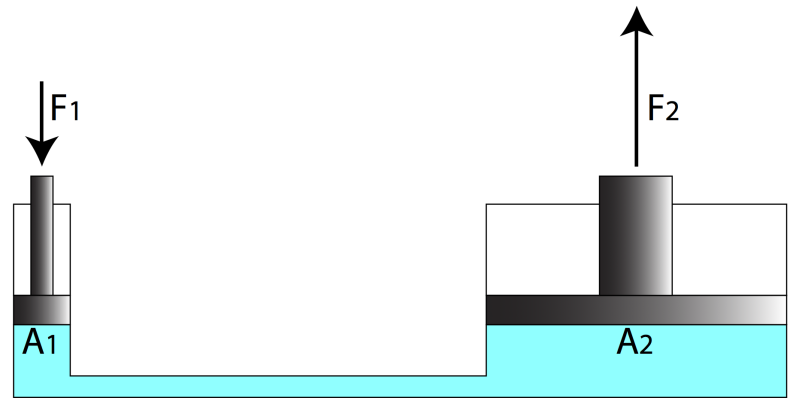Pascal Principle
Pascal's principle, also called Pascal's law states that "a change in pressure applied to an enclosed fluid is transmitted undiminished to all portions of the fluid and to the walls of its container."
Hydraulic Machine

Figure 1: A diagram of hydraulic machine in physical parameters
One frequent application of the Pascal's principle is the hydraulic machine, made of two pistons connected by a liquid-filled pipe. The hydraulic press works on the principle of Pascal's law. The pressure throughout a closed system is constant since there is no leakage.

Figure 1: Pressure of a hydraulic machine
Since they have the same pressure, we can calculate their pressure

Figure 2: Further derivation of pressure of a hydraulic machine
Mechanical advantages allows humans to perform tasks much easier in terms of the force they need to apply. The mechanical advantage of a hydraulic machine is listed below.

Figure 3: Mechanical Advantage of A Hydraulic Machine
The velocity ratio (V.R.) of a machine is defined as the ratio of the velocity of the effort to the velocity of the load, measuring the ratio of the displacement of the effort to the displacement of the load. The velocity ration of a hydraulic machine is listed below.

Figure 4: Velocity Ratio of a hydraulic machine
From conservation of energy of a hydraulic machine, we know that work done by the input force must be equal to work done by the output force.

Figure 5: Work done by a force by conservation of energy

Figure 6: Further derivation by of the work done by a force by conservation of energy
Archimedes’ Principle
Archimedes' principle states that any body completely or partially submerged in a fluid (gas or liquid) at rest is acted upon by an upward, or buoyant, force, the magnitude of which is equal to the weight of the fluid displaced by the body.

Figure 2: Equation for calculating buoyancy by Archimedes’ Principle